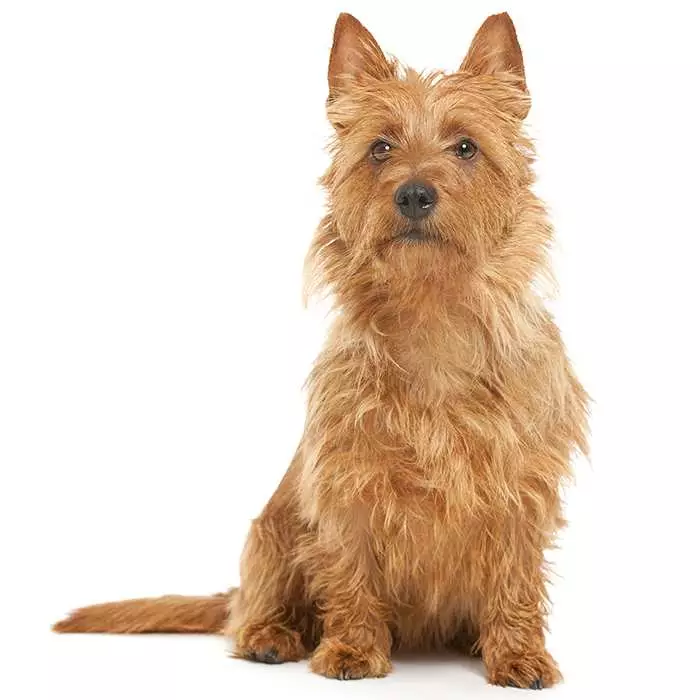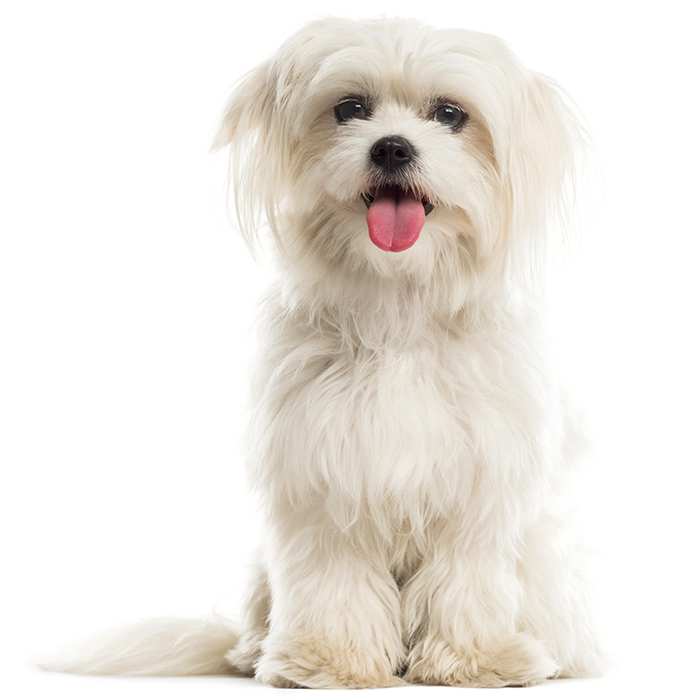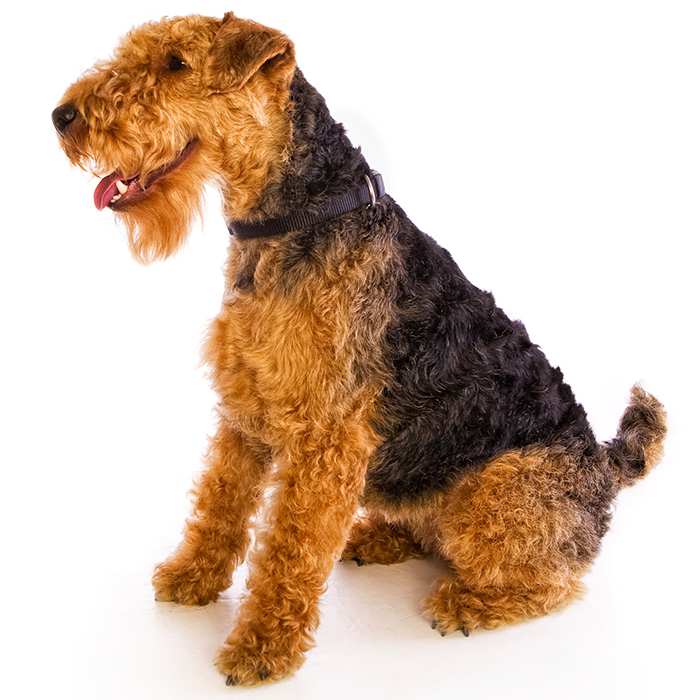Australian Cobberdog
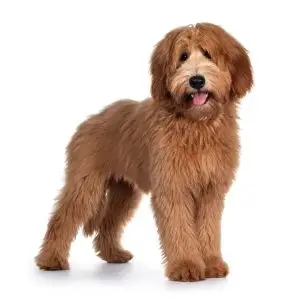

| Recommended for | Families, those requiring a therapy dog, medical alert dog or assistance dog |
| Breed Classification | Hybrid |
| Other names | The ‘Cobber’ (Australians always abbreviate names!) |
| Lifespan | 13-15 years |
| Size | Standard, medium & miniature |
| Temperament | Intelligent, sociable, loyal, intuitive, friendly |
| Intelligence | Very high |
| Tendency to bark | Low |
| Maintenance Level | Medium |
| Health Risk | This breed has a medium probability of having health issues in its lifetime, hence it is one of the more affordable breeds to insure. |
Insuring an Australian Cobberdog?
Get our award-winning Nose-to-Tail Cover with up to $30k annual benefit limit, up to 90% of eligible vet bills back, and no sub-limits.
Get a quick quote
Is this breed right for you?
Try our breed selector quiz to find out your best matching breed!
Insuring an Australian Cobberdog?
Get our award-winning Nose-to-Tail Cover with up to $30k annual benefit limit, up to 90% of eligible vet bills back, and no sub-limits.
Get a quick quote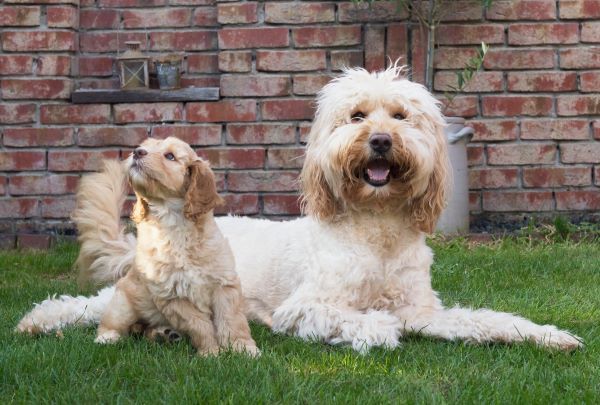
Breed history of Australian Cobberdogs
Australian Cobberdog is the name to define a pure breed ‘Labradoodle’ originating in Australia. In Australian slang, a cobber is a ‘mate’, and the name Cobberdog was chosen because it means ‘dog-friend’, referring to the breed’s primary purpose as a therapy and assistance dog.
In the late 1980’s, Wally Conron, at the time the breeding manager for the Royal Guide Dogs Association of Australia, received a request for a hypoallergenic guide dog for a blind woman whose husband was allergic to dogs. After trialling – and ruling out – Poodles, who have the right coats but the wrong temperament, he decided to cross a carefully selected Poodle with a working guide dog Labrador, and the first ‘Labradoodle’ litter was born.
After some initial media publicity brought the new crossbreed to the public’s attention, the demand for this new ‘designer dog’ skyrocketed way beyond Conran’s expectations and, much to his dismay, quickly became a victim of its own success. With no breeding standards or criteria, anyone could breed a Labradoodle by crossing any old Labrador with any old Poodle and sell the pups for a large sum, with no regard for their hereditary quality.
Unfortunately, the Labradoodle became an unpredictable breed with widely varying characteristics, even between puppies within the same litter. Their temperaments varied significantly, and many were not hypoallergenic. Poor breeding techniques have resulted in some significant health concerns, including hip dysplasia, eye disease, epilepsy and allergies.
For these reasons, some concerned breeders went back to the original origins and long-term vision for the Labradoodle to start again, this time with strict breeding regulations and registration criteria in place. A new name was required to distinguish it from the Labradoodle, and thus the Australian Cobberdog came into being.
The Australian Cobberdog is descended from the original, genetically sound strains of the Australian Labradoodle and was officially recognised as a pure breed in development in January 2012 by the Master Dog Breeders and Associates (MDBA) Global Pure Breed registry. Only registered MDBA breeders that guarantee a breeding programme that complies with the breed standard can issue the Australian Cobberdog pedigree.
According to the MDBA, the founders of the Australian Cobberdog made many hard decisions to ensure the health, predictability of temperament, characteristics and management requirements of their breed have been optimised. Breeders are required to genetically, rather than visually select, parent animals for their good health and consistent temperament, traits and characteristics, resulting in healthy and consistent puppies. The result of these stringent requirement is a healthy, identifiable and predictable breed of hypoallergenic dog that is reliably suited to service, therapy and assistance work – thereby continuing Wally Conran’s original mission.
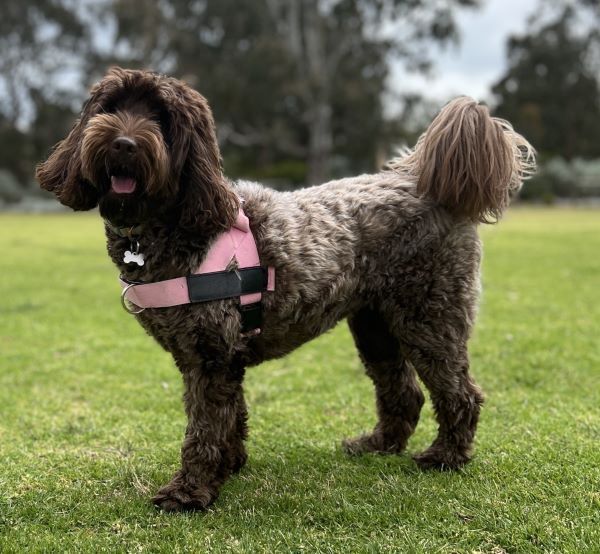
Physical description of Australian Cobberdogs
The Cobber does not have a hair coat, but rather a fleecy or woolly coat that is soft and silky, odourless even when wet, non-shedding and allergy friendly. It may either be wavy or ringlet, with more defined curls. The coat doesn’t shed, and the skin doesn’t peel or flake, meaning that it doesn’t affect most people who usually have an allergy to dogs.
This fabulous coat comes in a variety of colours, including solid black, silver, coffee , blond, gold, silver, blue and red, colour combinations, such as Merle (chocolate and blue) and parti (a combination of any one of the solid colours with white), and shaded colours (various tones of the same colour).
The breed is available in 3 different sizes:
- Standard: height of 50 to 58 cm and weight of 20 to 35 kg
- Medium: height of 43 to 50 cm and weight of 12 to 20 kg
- Miniature: height of 33 to 43 cm and weight of 6 to 10 kg
| Weight range | 6 to 35 kg |
| Height range | 33 to 58 cm |
| Colours | A wide variety of colours and combinatons |
| Coat length | Medium |
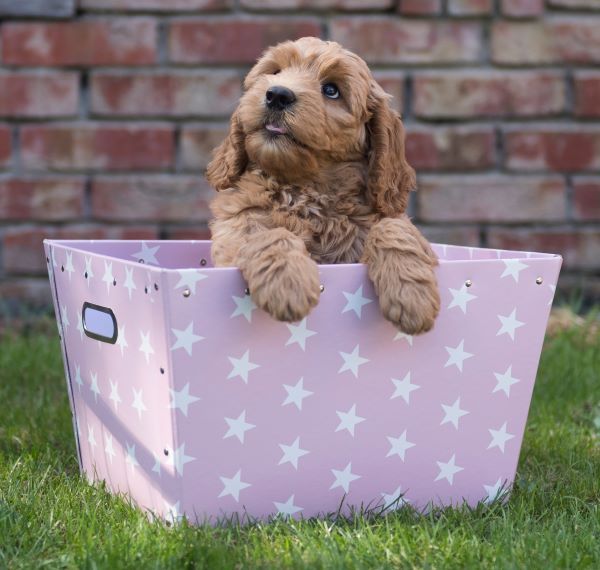
Australian Cobberdog personality and temperament
The Australian Cobberdog was developed for its even temperament and kind, friendly, intuitive and empathetic nature. It is therefore the ideal dog both for families and those in need of a therapy or assistance dog.
You will struggle to find fault with the Cobberdog’s nature. They are sociable, trusting, enthusiastic and joyful, and always eager to please. Active, with a comical goofy nature, they can be mischievous; they love to play the clown and make people laugh. Friendly, loving, attentive and obviously loyal to their own family, they are entirely non-aggressive.
Australian Cobberdogs are very intelligent dogs who will meet your gaze and look deeply into your eyes, seemingly with an incredible combination of wisdom, understanding and curiosity, as if they are trying to read what you expect of them. Their sensitivity and ability to perceive people’s moods and to understand who needs care make them an excellent therapy and assistance dog for those who have difficulty interacting, including small children, the elderly and the physically challenged.
This is a very versatile breed which adapts well to any environment, whether city or country, large house or small apartment – as long as they get enough exercise, both physical and mental. They have no problem spending hours alone waiting for the family to return from work or school; they never gets bored and can entertain themselves by playing with a toy or stick or inventing some interesting activity to pass the time.
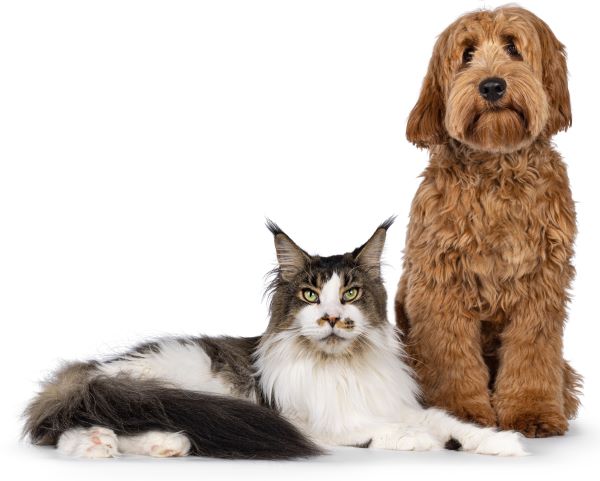
Australian Cobberdogs with kids and other pets
The Australian Cobberdog is fantastic with children in general, and when working as a therapy and assistance dog, has provided exceptional physical and emotional support to children with conditions such as anxiety, autism, Downs Syndrome and Post Traumatic Stress Disorder.
The Cobber gets along well with other dogs and pets of all kinds, including cats, birds and rodents.
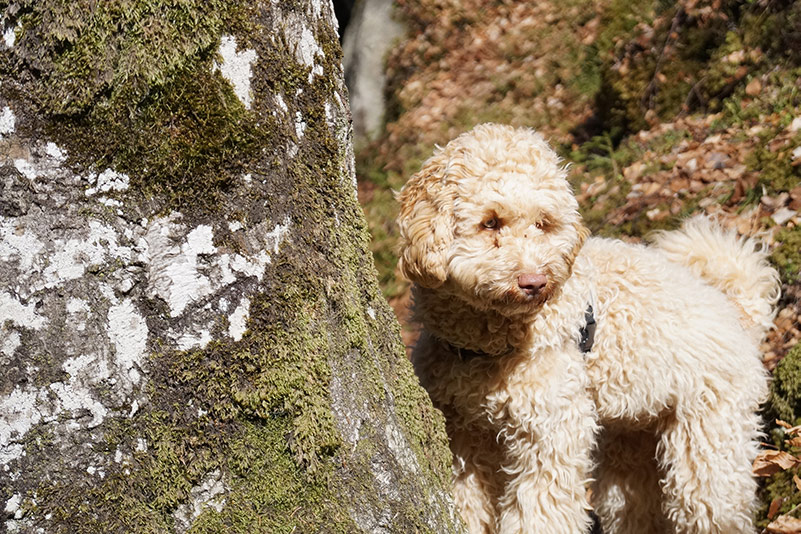
Australian Cobberdog training and exercise
Close family contact, mental stimulation and moderate exercise keep the Australian Cobberdog content, and he thrives on a long daily walk. Daily one-on-one playtime, learning new tricks and attending dog training classes are all good ways to keep him stimulated.
Because of his intelligence and thirst for learning, he needs plenty of mental exercise to prevent boredom from setting in and to avoid behavioural issues. He can attempt to outsmart his owner if undisciplined, so it is very important that he has a firm but calm, consistent owner.
To become a successful therapy and assistance dog, it is essential to be a fast learner, and the Cobber is known for his ability to train quickly and learn a multitude of tricks and unusual or special tasks.
| Energy level | Moderate |
| Exercise requirements | Moderate |
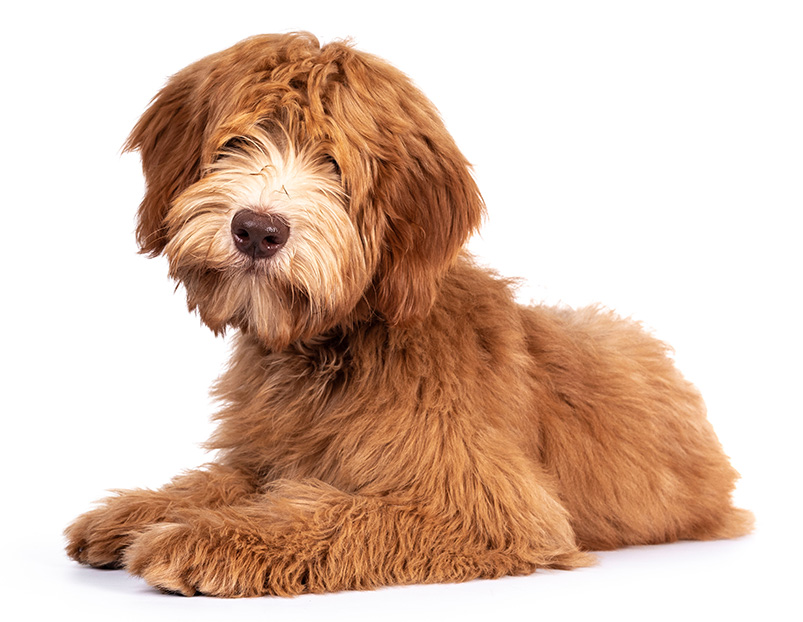
Australian Cobberdog feeding and nutrition
The Australian Cobberdog should do well on a high-quality, well-balanced diet that is appropriate to the dog’s age (puppy, adult, or senior), size and activity level.
Although they don’t tend to be greedy eaters and rarely overeat, Cobbers may become overweight, so it’s important to monitor their calorie consumption and weight level and adjust their diet accordingly.
Check with your vet if you have any concerns about your dog’s weight or diet.
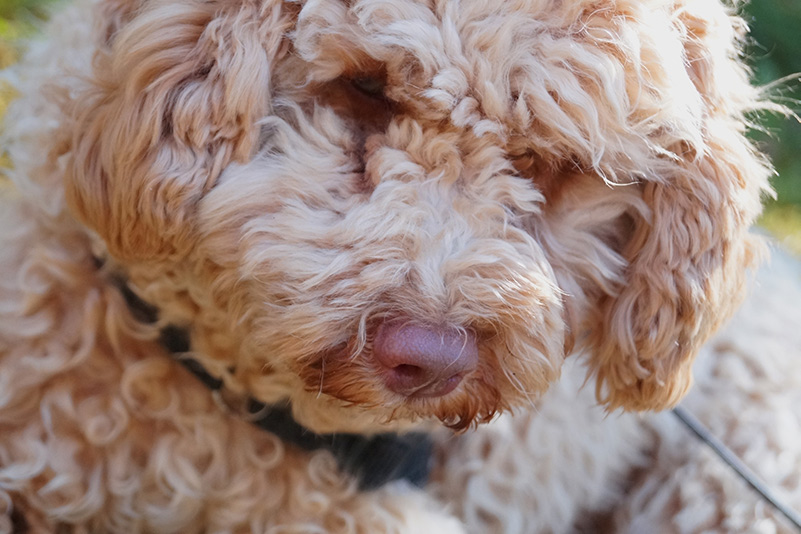
Australian Cobberdog care and grooming
The Cobberdog’s coat is a soft, luxurious and smooth textured wavy or curly fleece, single coat. It is characterised by very low to no shedding and very low to no odour making it allergy-friendly.
While it does require some grooming, the coat is relatively low maintenance. Curly coats are denser than wavy coats and need regular grooming with a slicker brush at least every two weeks and a trim, scissoring or clipping to keep tidy around two to three times a year.
Health issues for Australian Cobberdogs
The Australian Cobberdog gets a clean bill of health as it has been meticulously DNA health screened for successive generations, with carriers of known diseases removed from the breeding programs of MDBA registered breeders. Breeding dogs are required to be DNA Health Screened for the following disorders:
- Progressive Retinal Atrophy (PRA) is a family of inherited eye diseases that can occur in Labradoodles and can lead to blindness. The nerve cells at the back of the eye degenerate over time and will cause cataracts to form. The first sign of progressive retinal atrophy is usually night blindness; this progresses to total blindness over a period ranging from months to years. If there is still vision in the eye, corrective surgery may be an option.
- Degenerative Myelopathy is a disease that affects the spinal cord in dogs, causing progressive hind limb muscle weakness and loss of coordination. Affected dogs gradually becoming incontinent and losing the ability to walk. The condition is ultimately fatal.
- Exercise Induced Collapse (EIC) is a genetic disorder that causes otherwise healthy dogs of certain breeds to collapse after a period of intense exercise. Typically, 5 to 20 minutes of strenuous exercise with extreme excitement induces weakness and then collapse. Although most dogs recover quickly (within 30 minutes), severe episodes of EIC can be fatal.
- Eye anomalies: Microphthalmia, Anophthalmia & Coloboma (Wheaten Terrier Type) are inherited eye diseases that can affect dogs.
Not all conditions are covered by Pet Insurance. For details of Bow Wow Meow Pet Insurance cover, refer to the Product Disclosure Statement.
Free engraved pet ID tag on sign up3
Customer Satisfaction
21 day cooling off
Easy to use Pet Portal


